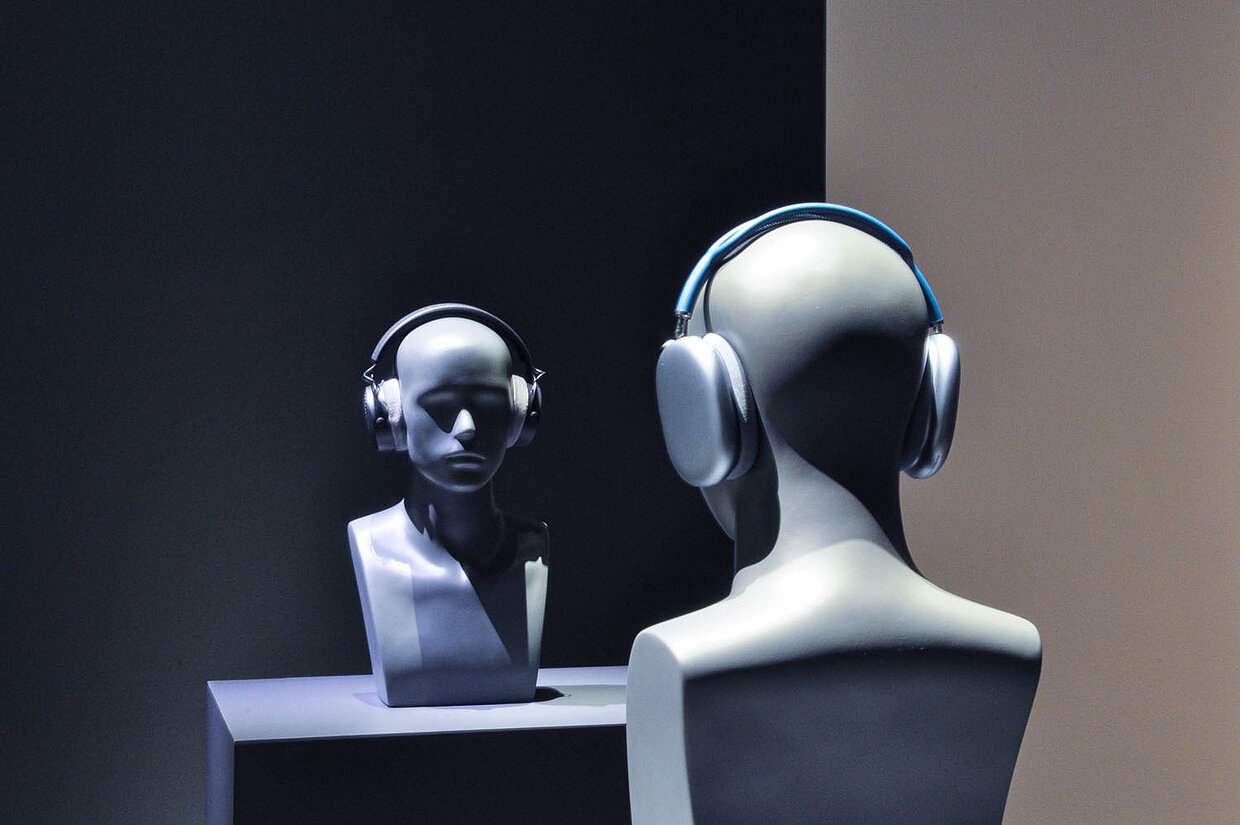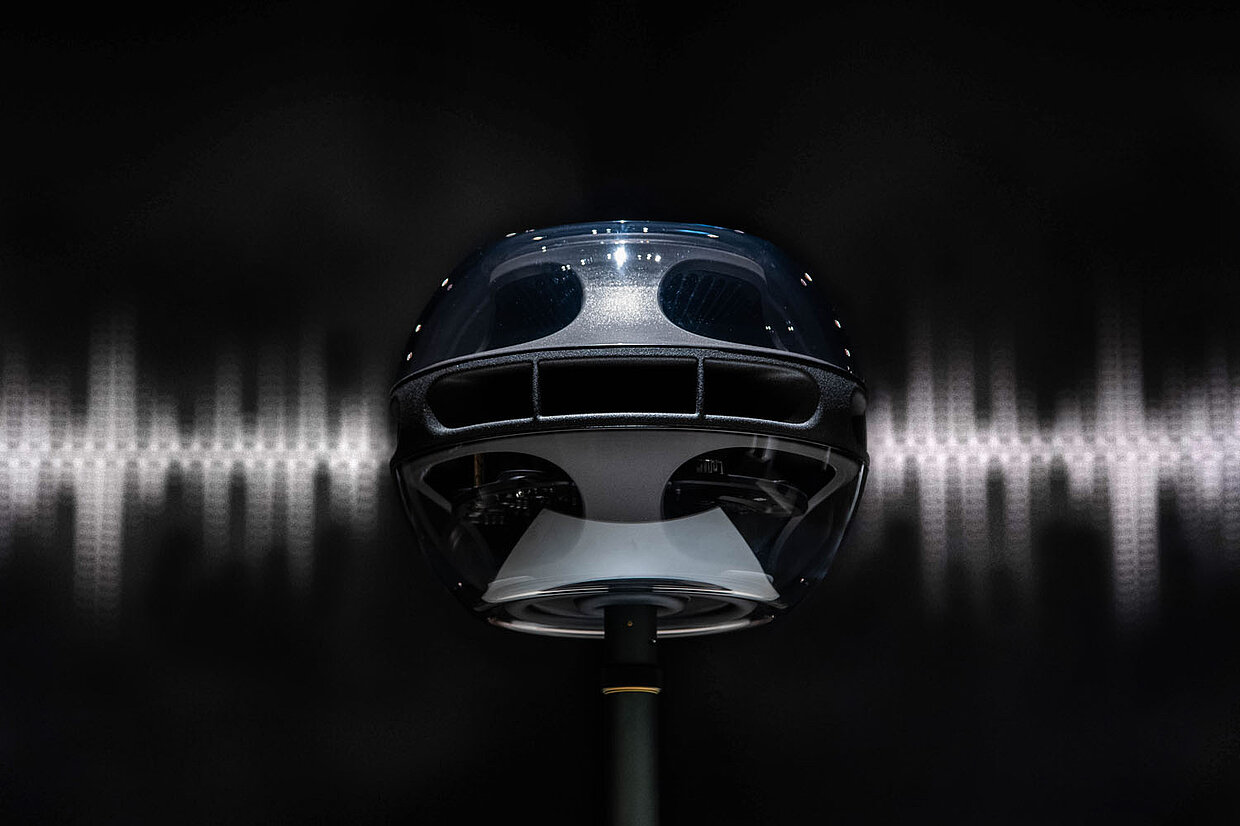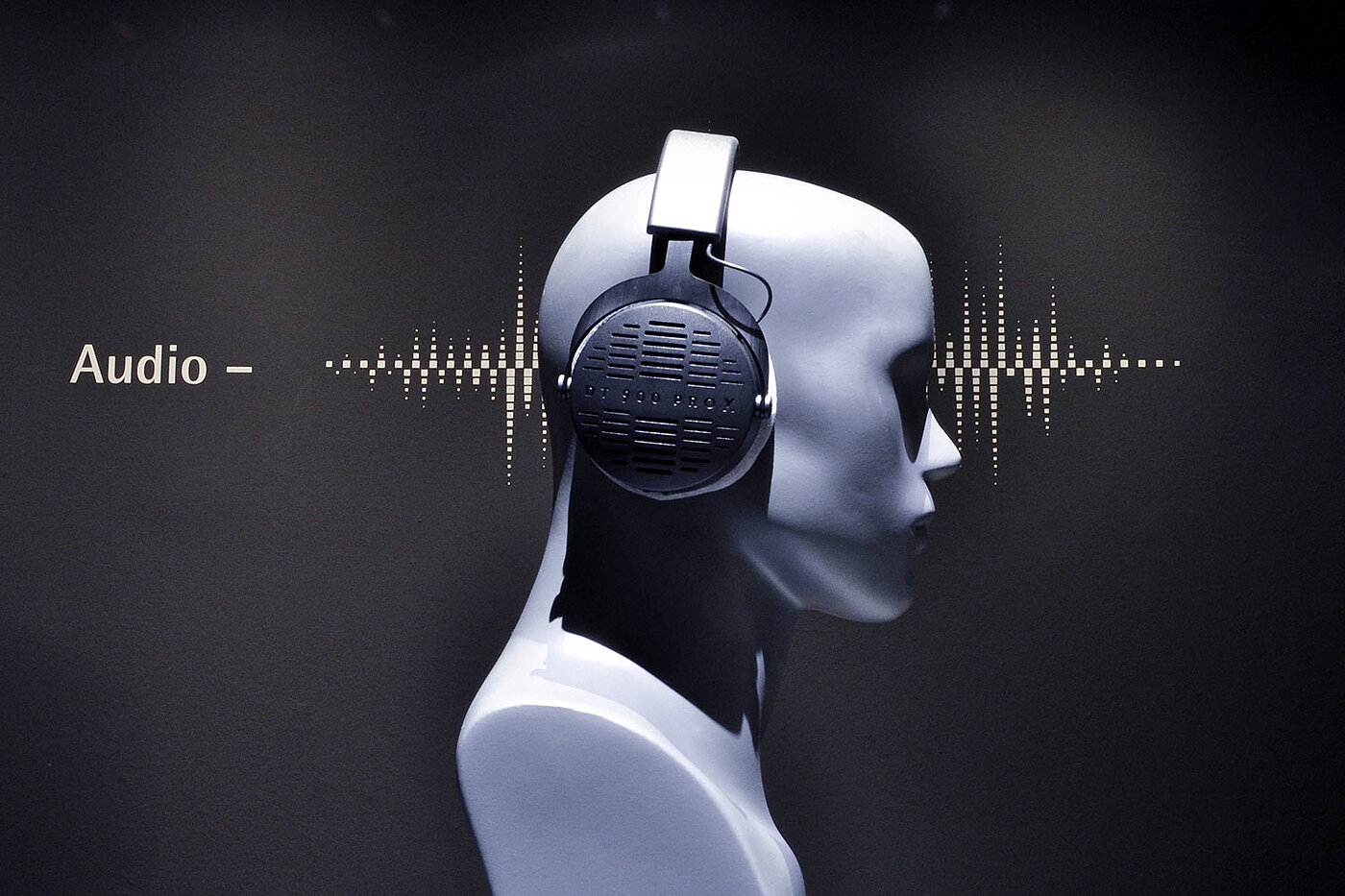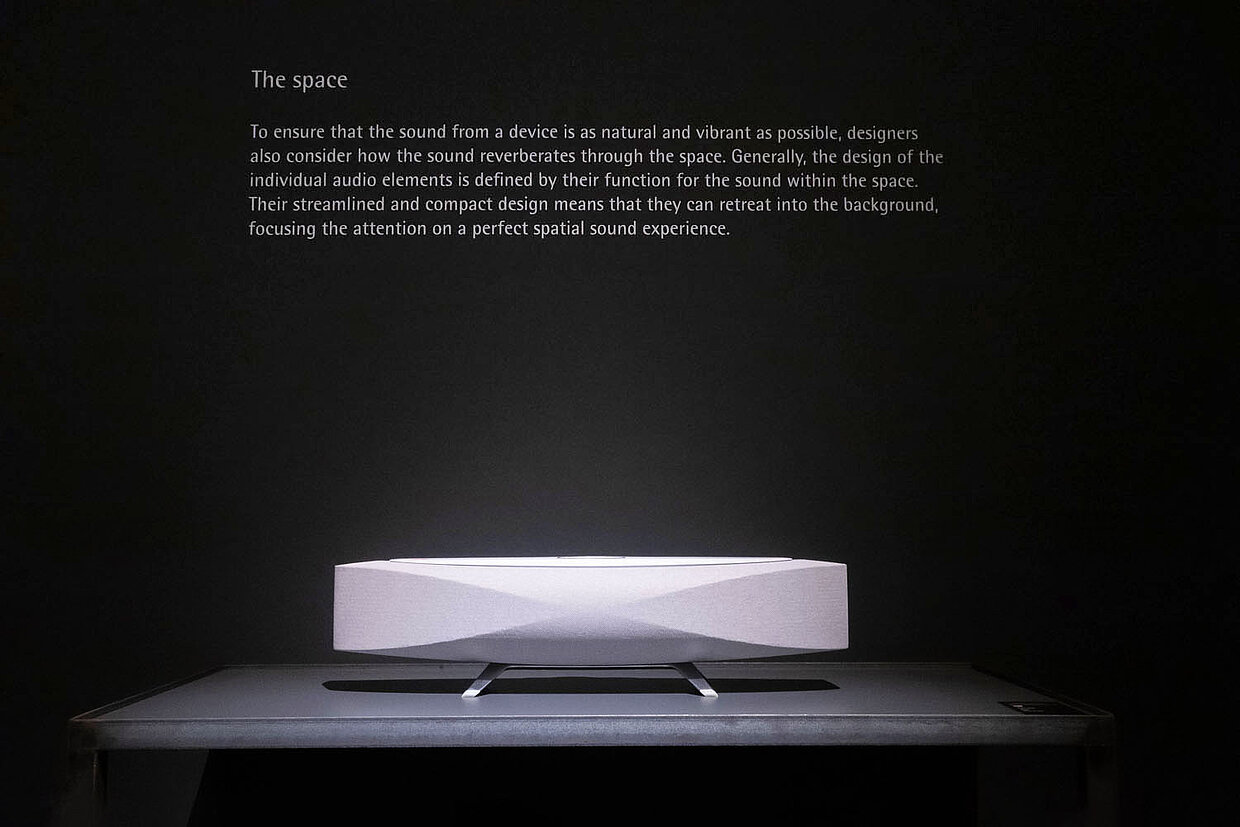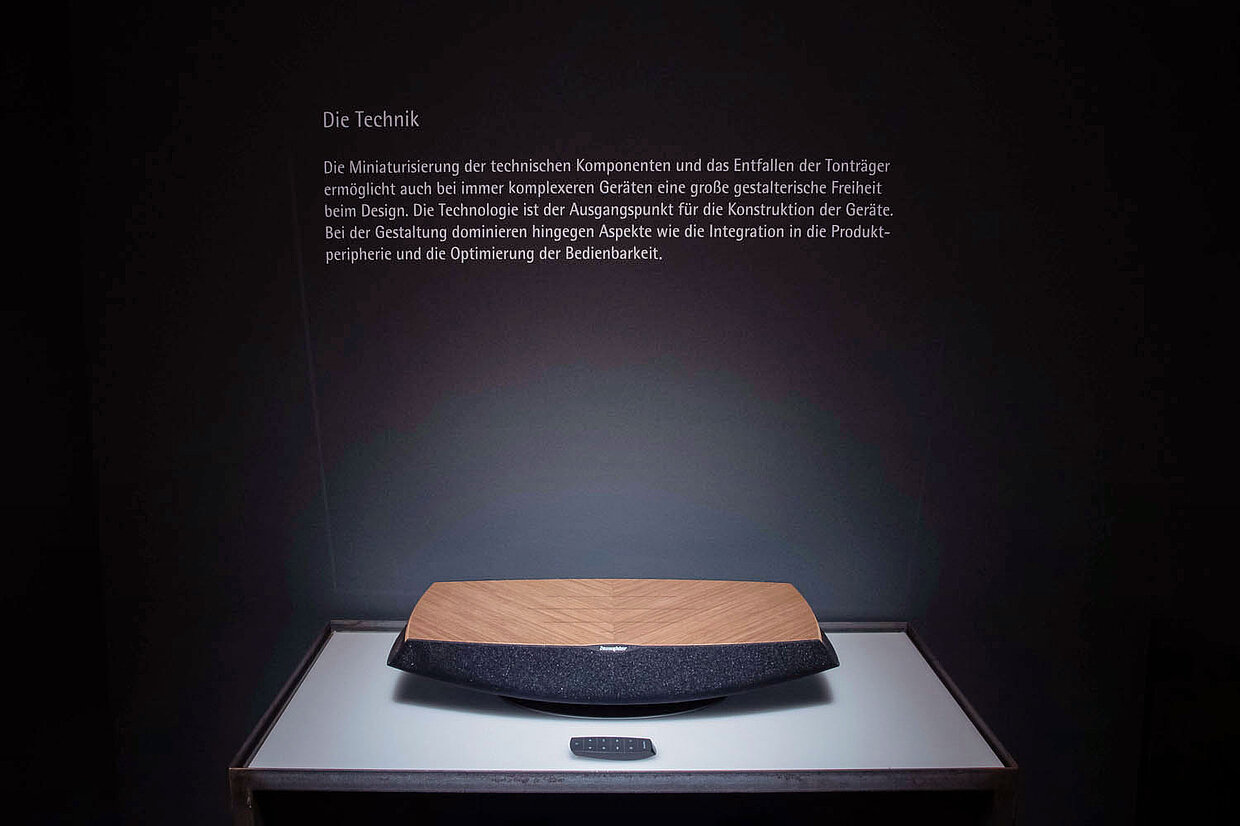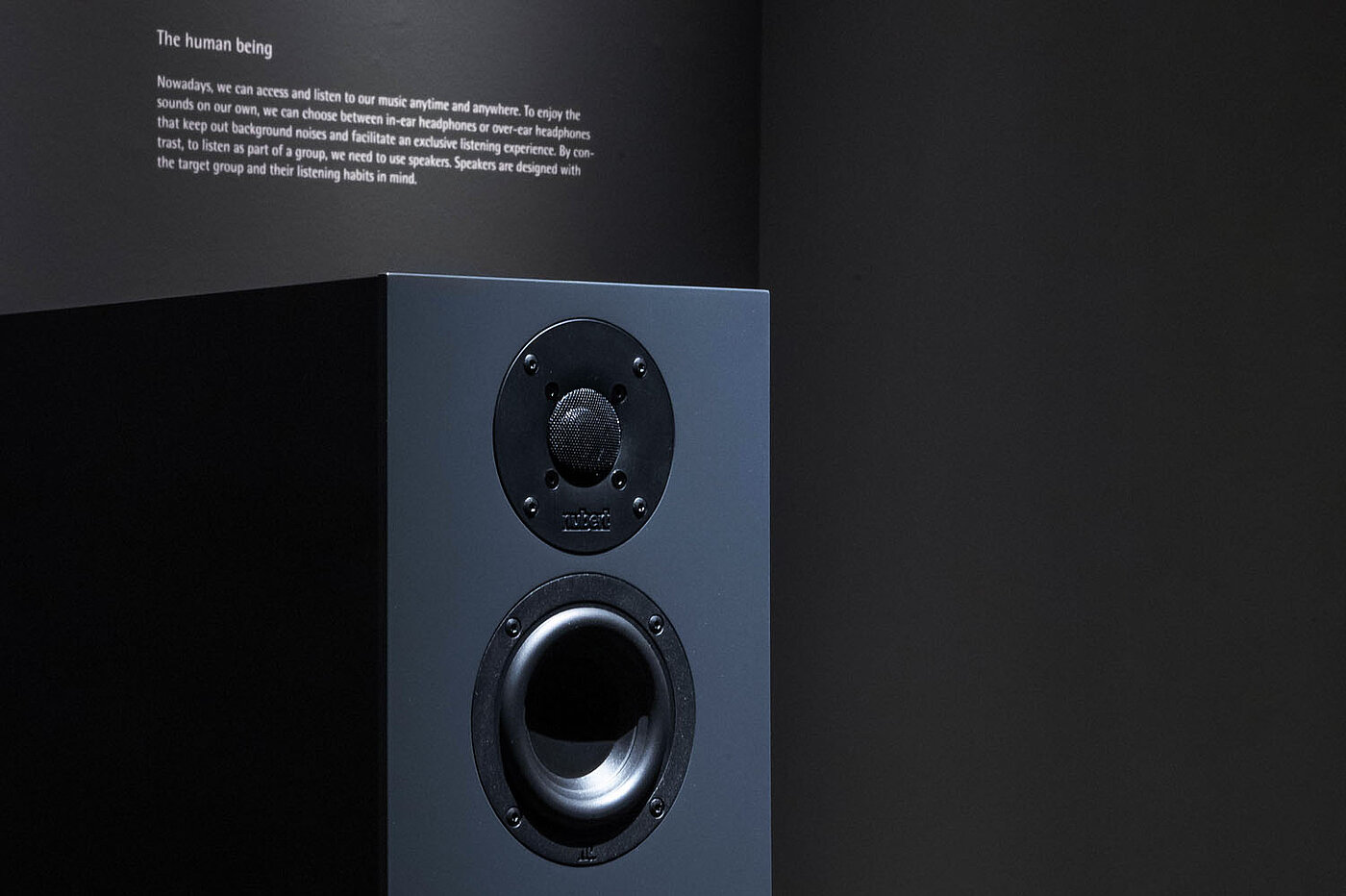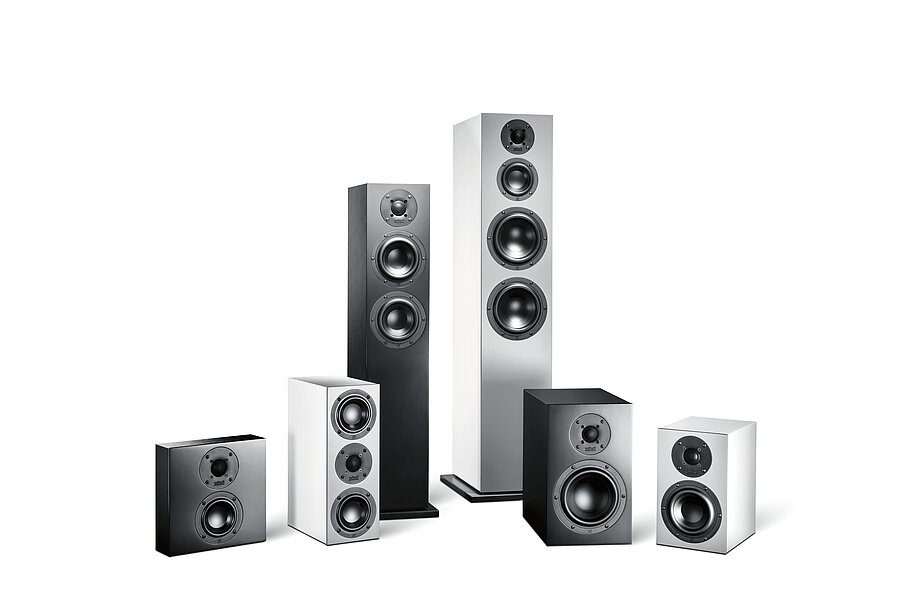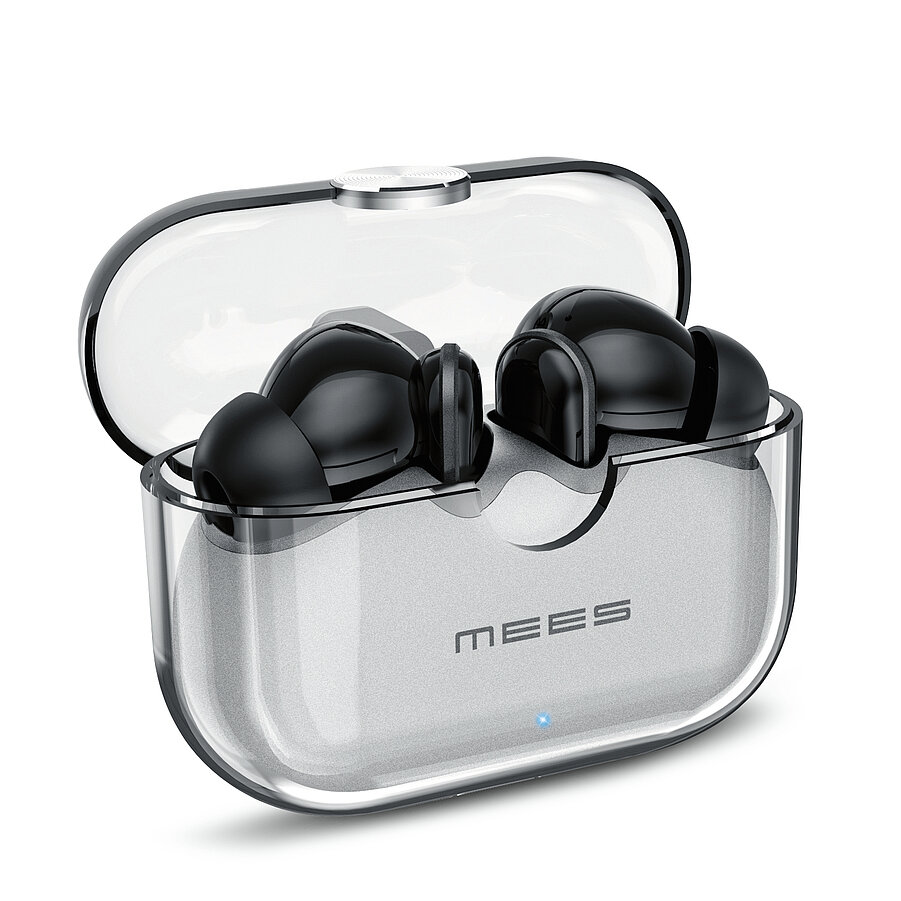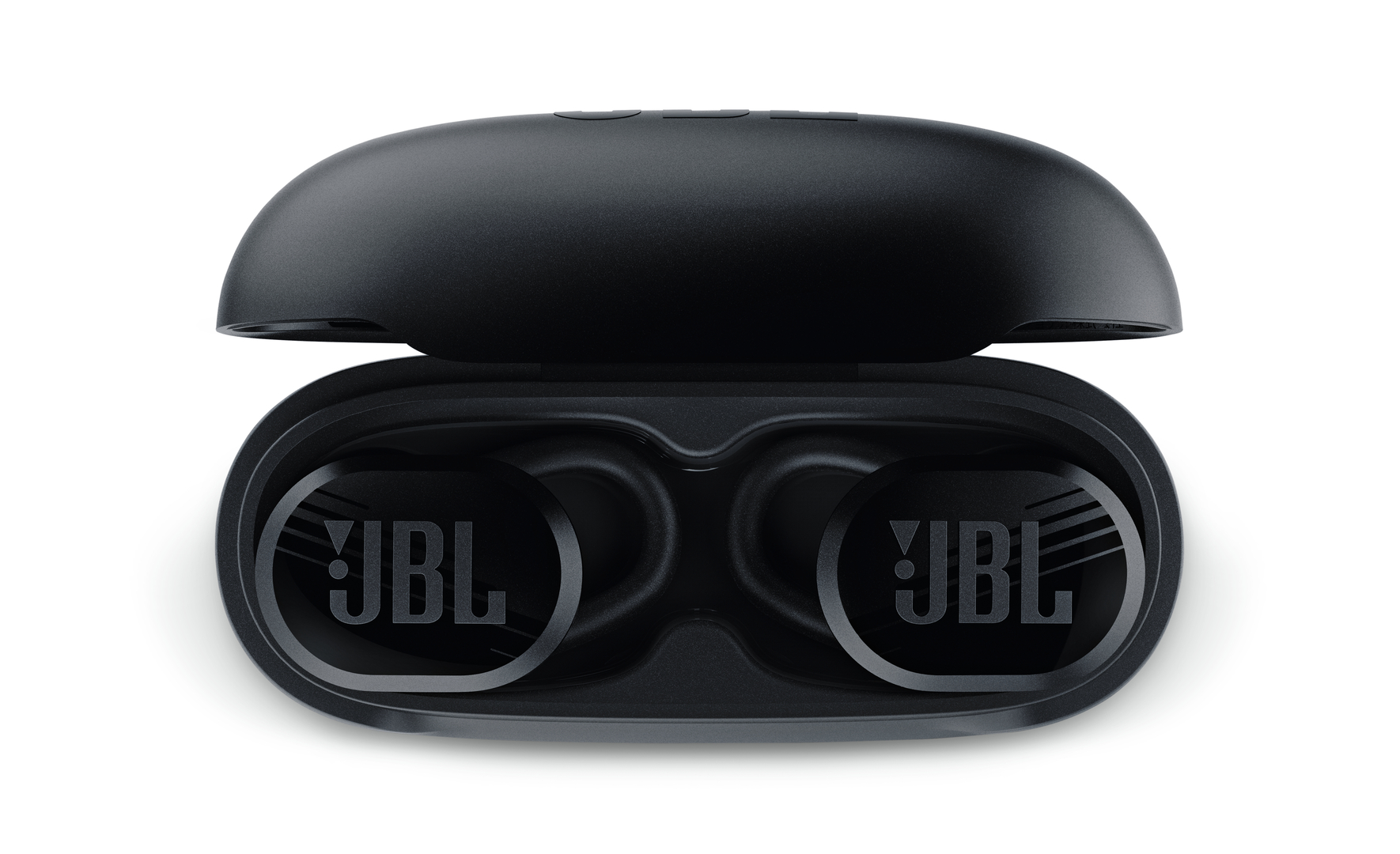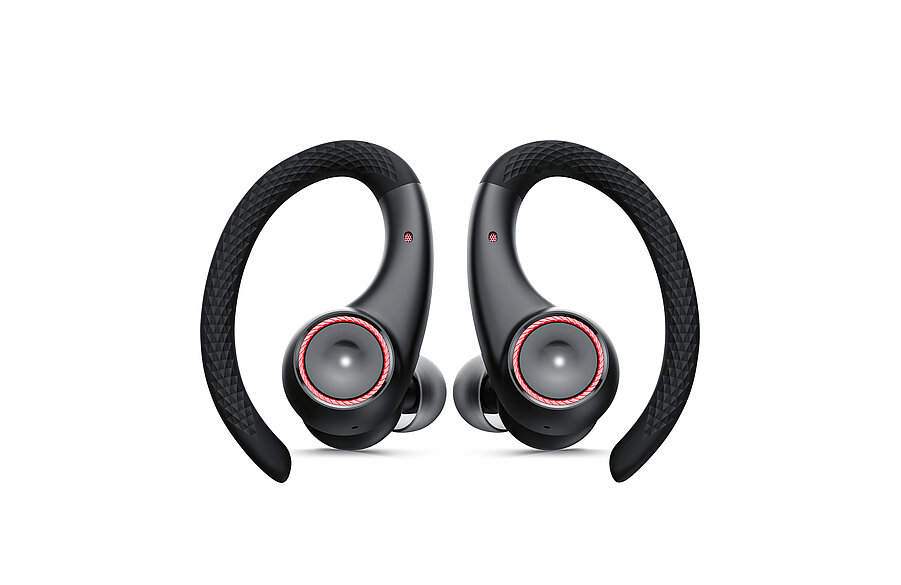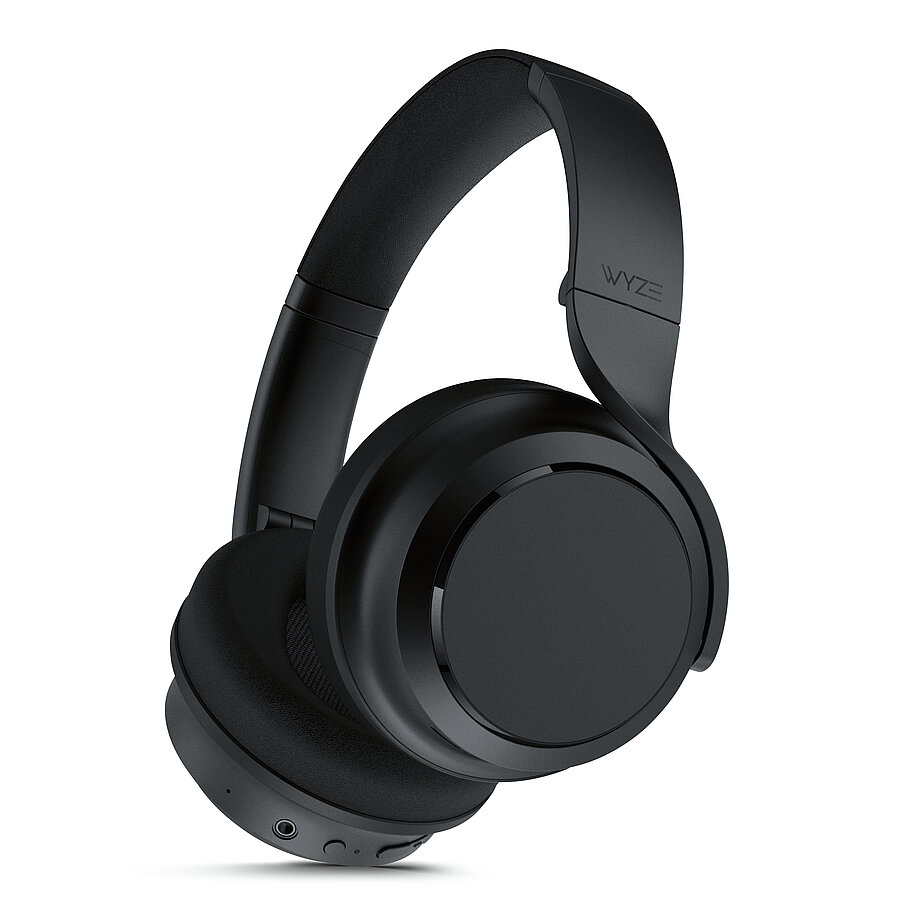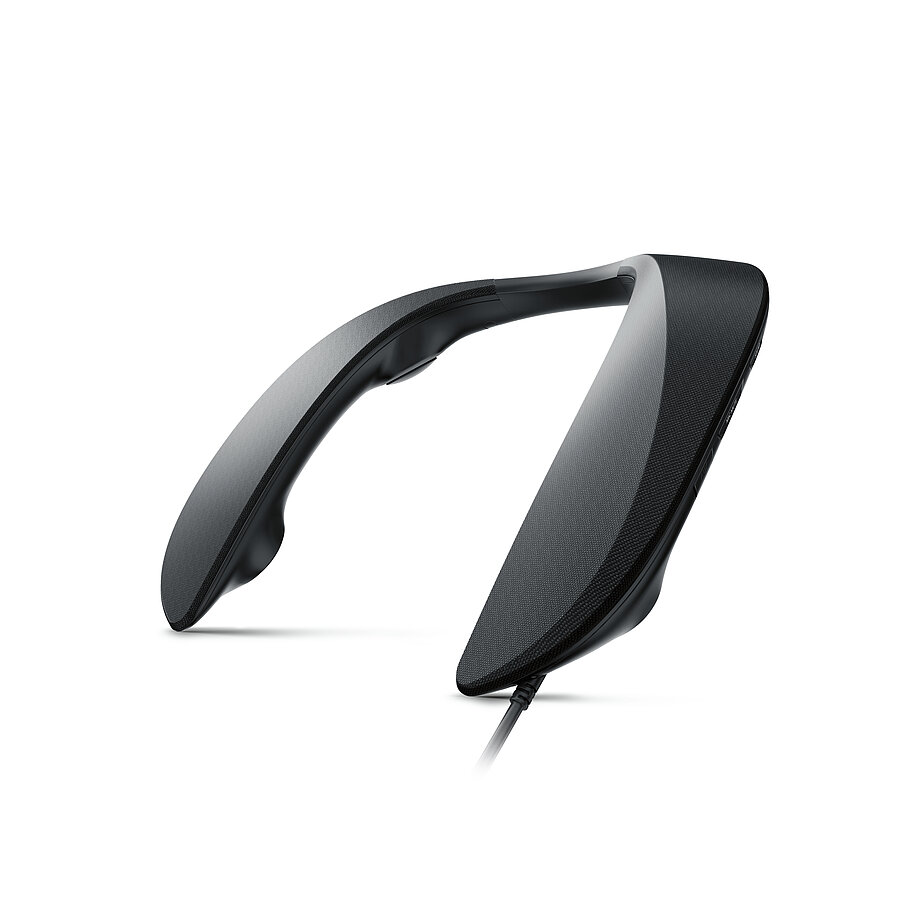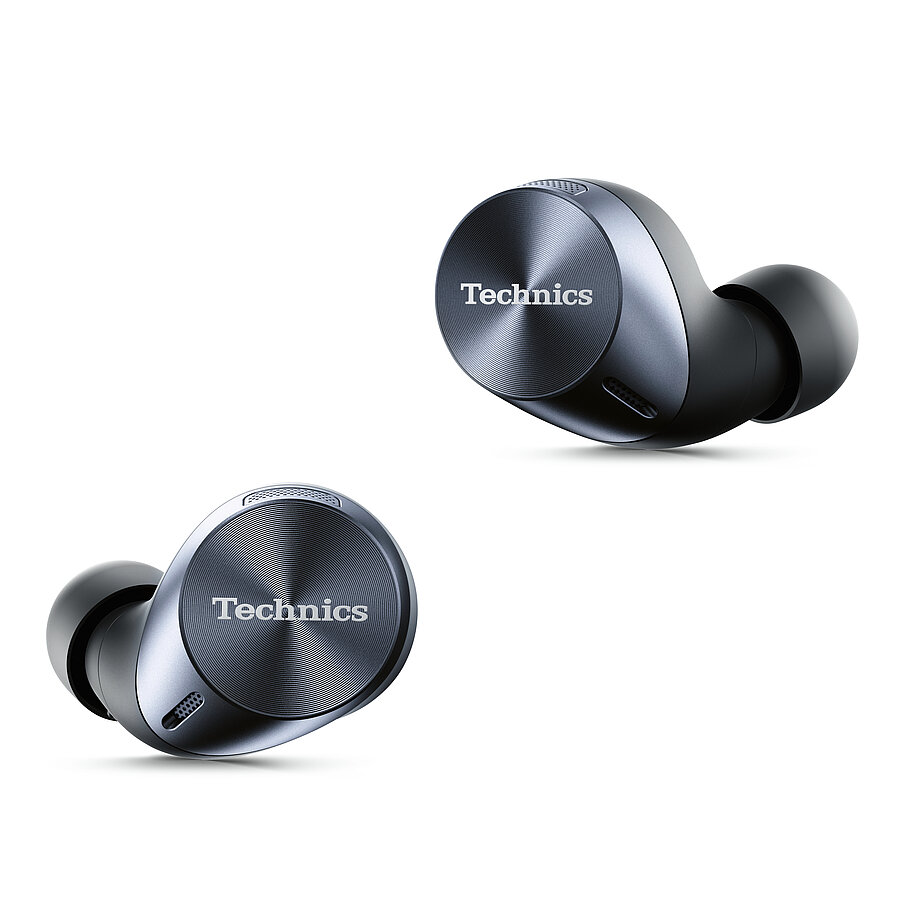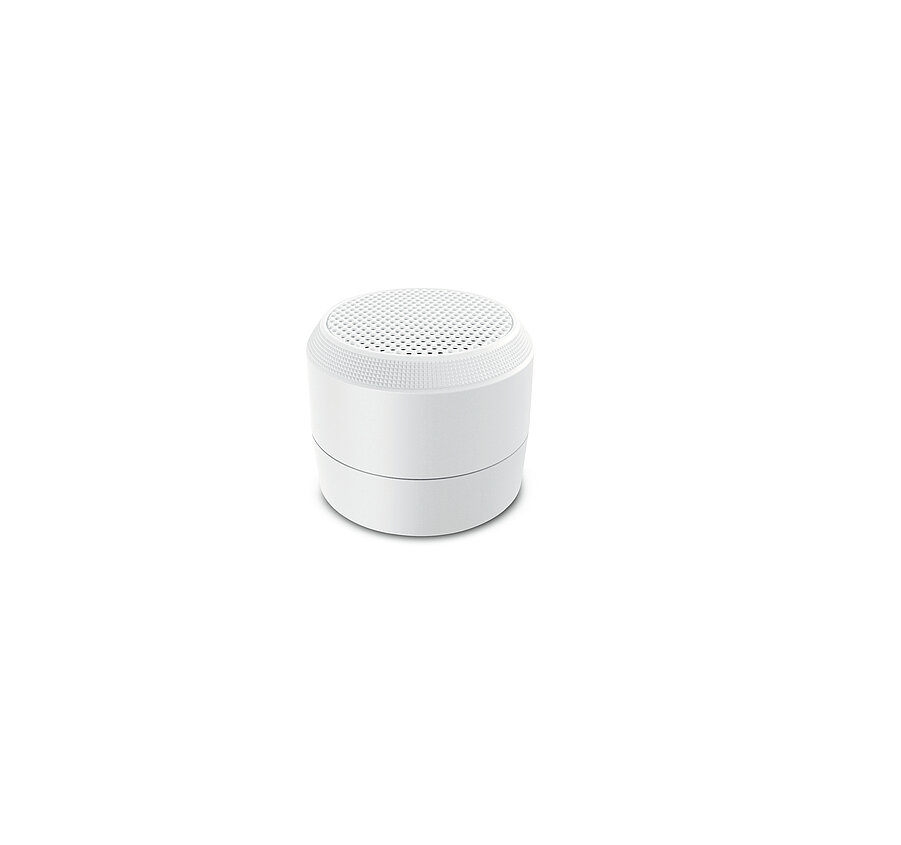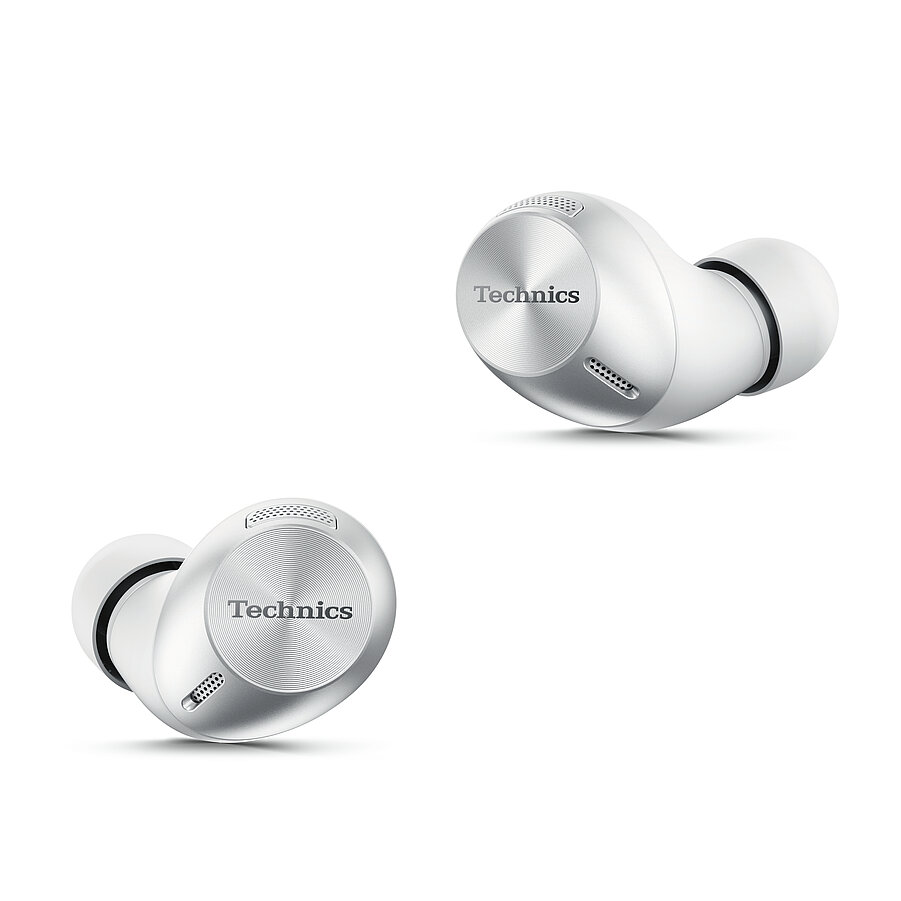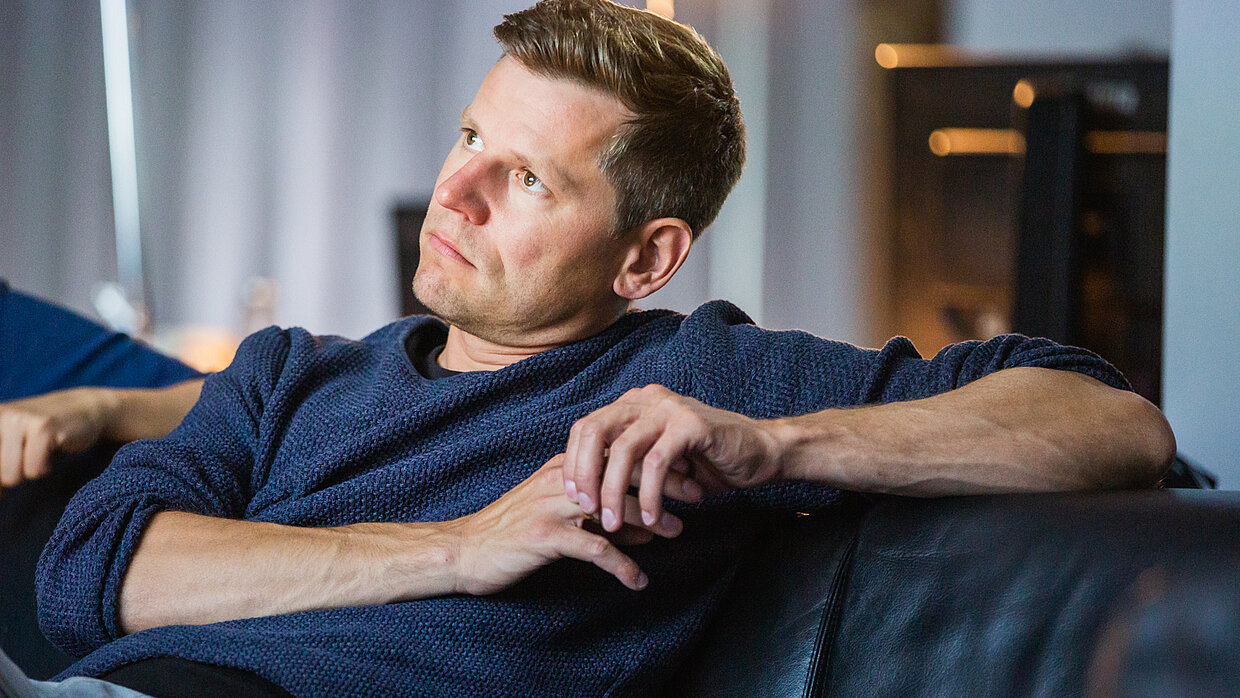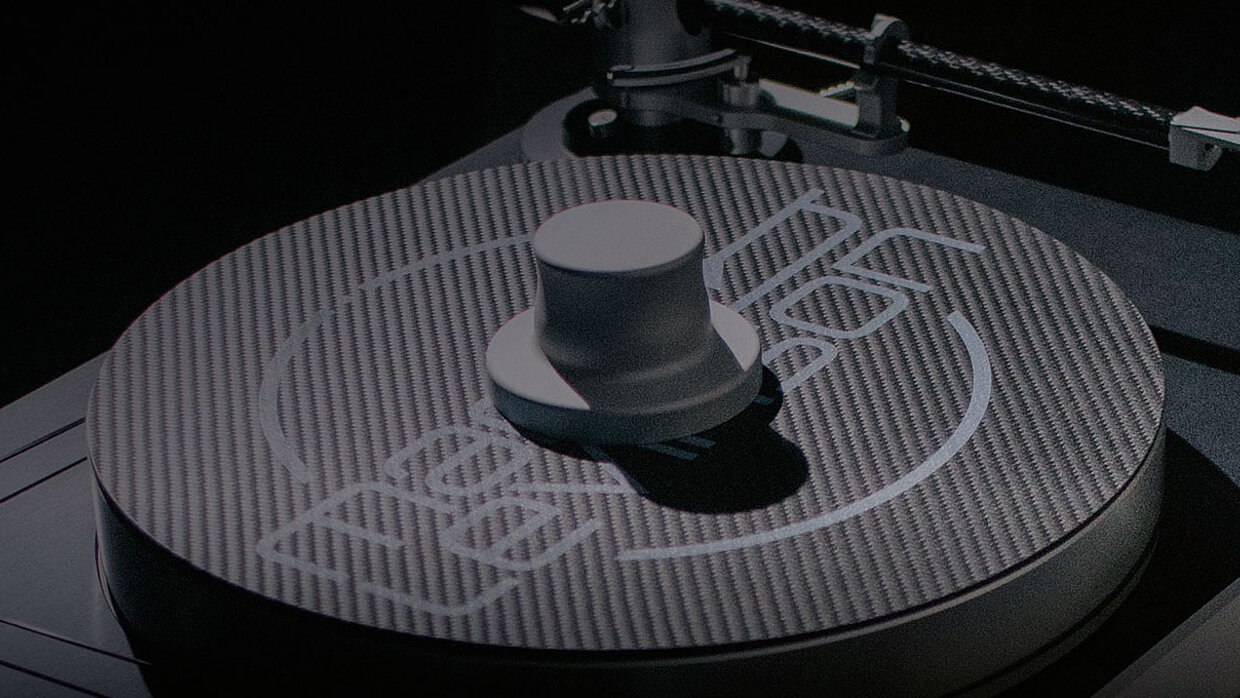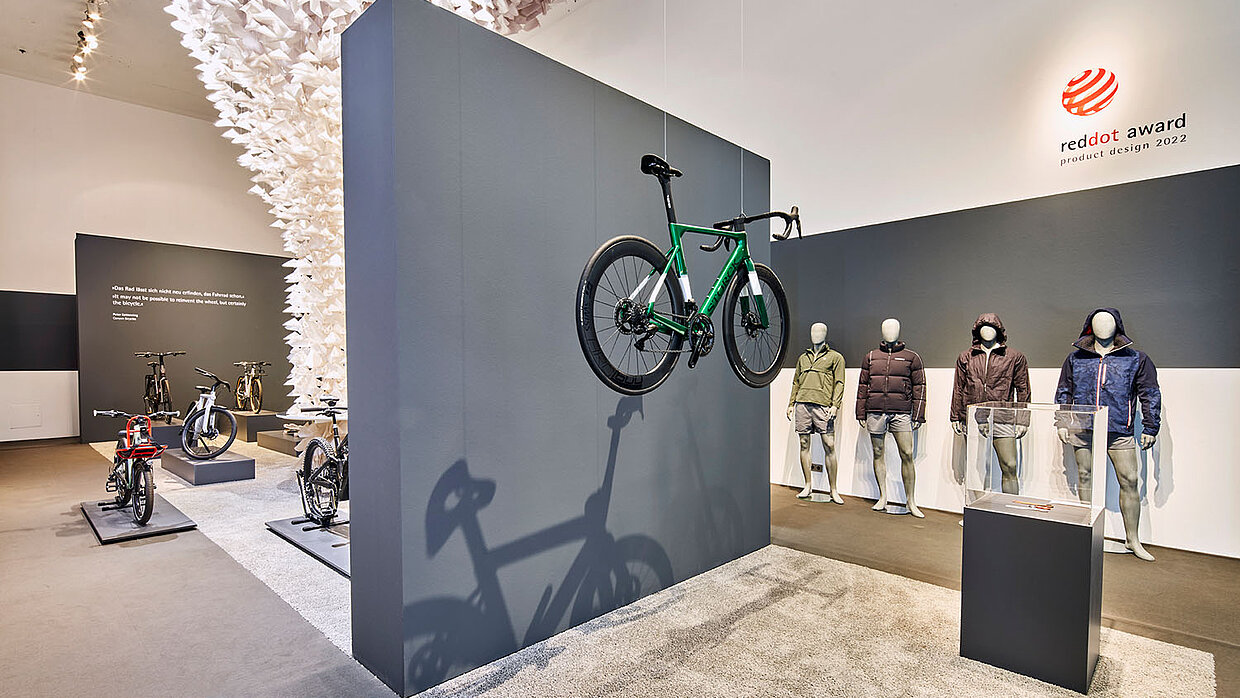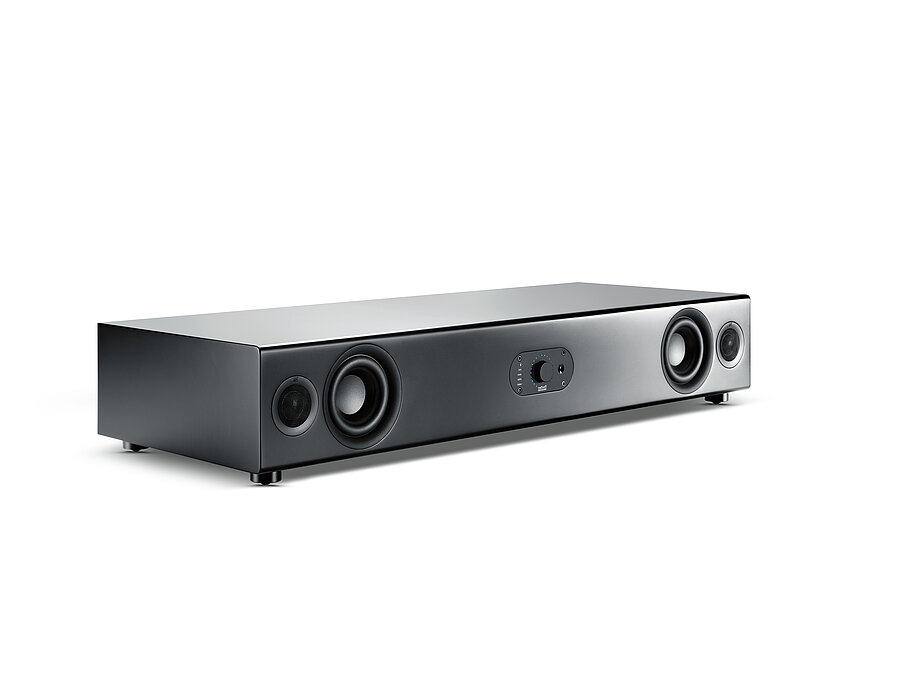
Studio exhibition “Audio – Design for Sound”: What is it that gives sound a physical form?
Creating a product from something intangible like sound is especially challenging. So what is it that determines the specific form that designers choose for an output device? A new studio exhibition has devoted itself to this topic, providing answers to the question of what it is that gives sound a physical form. Alongside the presentation of the exhibits that won a distinction in the Red Dot Award, speaker manufacturer Nubert has created an installation designed specially for this exhibition that introduces visitors to the spatial perception of sound.
Humans and the influence of human listening habits on design
Nowadays, we can access and listen to our music anytime and anywhere. To enjoy the sounds on our own, we can choose between in-ear headphones or over-ear headphones that keep out background noises and facilitate an exclusive listening experience. For example, the in-ear headphones on display include the LinkBuds by Sony, designed for users who regularly communicate online and want to stay acoustically connected to the outside world. For more audio transparency, the centre of the diaphragm of the newly developed, ring-shaped driver has been left open. An excellent example of the over-ear headphones are the products in the professional PRO X range from beyerdynamic, which have been developed specifically for music producers. The design of these headphones is a visual expression of their professional qualities. They also offer an impressive level of comfort.
By contrast, to listen as part of a group, we need to use speakers. Speakers are designed with the target group and their listening habits in mind. Mobile devices for listening in a group in different locations are generally designed to be compact, portable and sturdy. These are uncomplicated plug and play products with a full sound. Examples include the Philips Wireless Speakers with a carrying strap or the portable Bluetooth speaker JBL Pulse 5 with its integrated LED light show.
Technology and its impact
Because of the miniaturisation of technical components and the fact that recording media are no longer needed, there is a large degree of design latitude even in the design of increasingly complex devices. It is the technology that informs the concept for the devices, which are perceived by the consumers as a ‘black box’, meaning that they don’t know what is on the inside and are interested solely in the function. By contrast, the physical design of these devices is determined by aspects such as their integration in the product periphery or optimising operability.
The all-in-one speaker system Omnia by Sonus faber is a good example of how such complex products can be designed in a way that allows them to blend into the home environment without looking overly technical. Its innovative user interface means that there is no need for a traditional display.
By contrast, the DJ Controller DDJ-REV7 takes an entirely different approach. This professional device is consciously designed to look technical and functional. With the appearance of an analogue turntable and high-quality surfaces reminiscent of vinyl records, it features a clear stylistic idiom and a clearly structured user interface.
Space and the related challenges to creating an immersive listening experience
To ensure that the sound from a device is as vibrant as possible, designers also consider how the sound reverberates through the space. Generally, the design of the individual audio elements is defined by their function for the sound within the space. Their streamlined and compact design means that they can retreat into the background, focusing the attention on a perfect spatial sound experience.
Visitors can experience what this kind of spatial sound experience might look like – and sound like – with the speaker installation by Nubert. Using twelve speakers from the Red Dot Award-winning Nubert nuBoxx speaker series, which comprises six speakers of different sizes, forms and functions, the installation creates a sound loop made up of sound effects, music and sounds from nature.
Design Re-Vision: the Walkman and its successors
At several points around the museum, called “Design Re-Visions”, the design approach behind a product is explored. The studio exhibition “Audio – Design for Sound” also features such a Design-Re-Vision station. The station shows the first Sony Walkman, brought to market in 1979, which revolutionised how people listened to music. From a design perspective, the Walkman was compact, light and easy to handle. The arrangement of the control buttons meant that it could be used with just one hand. The standardised size of the audio cassette dictated its size. Over forty years later, devices are still coming on the market that are inspired by the design of the Walkman, as demonstrated by the digital audio player A&ultima SP2000. The operating buttons are more or less the same, it’s just the medium that has changed. Instead of coming from a cassette, the music comes from high-resolution digital audio files that need a lot of storage space. This is why the size of the device is similar to that of its iconic predecessor.
Experience sound with all senses until the end of January 2023
The studio exhibition “Audio – Design for Sound” can be seen at the Red Dot Design Museum Essen until 15 January 2023.
Red Dot Design Museum - opening hours and admission prices
Tuesday-Sunday & public holidays: 11 a.m. to 6 p.m. (last admission: 5 p.m.)
Mondays: closed (except on public holidays and during NRW school holidays)
Museum admission incl. special exhibitions: 9 euros (reduced: 4 euros)
Children under 12 years: Free admission
Fridays: Pay-What-You-Want
Further information on the exhibitions can be found here.

